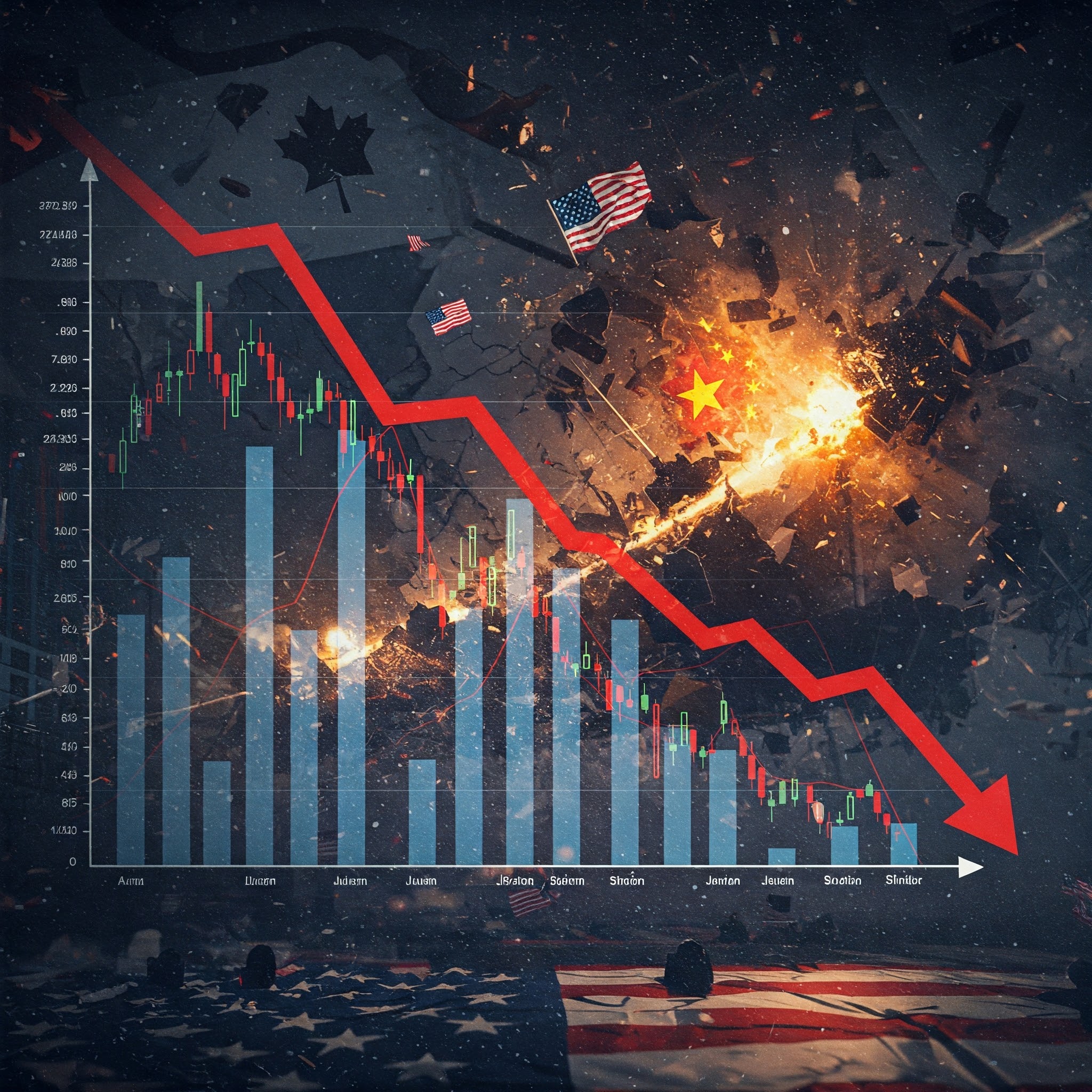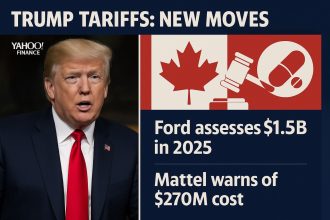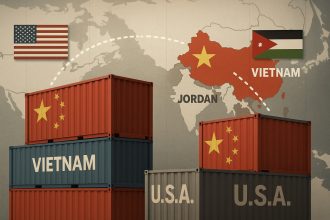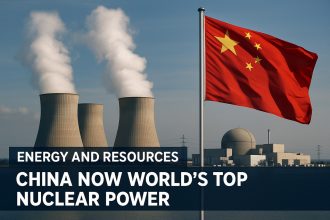Picture this: you’re grabbing your morning coffee, only to find the price has jumped overnight. It’s not just a bad day at the café—it’s a sign of something much bigger. On February 2, 2025, President Donald Trump signed an executive order slapping hefty tariffs on imports from China, Canada, and Mexico, igniting a trade war that’s sending shockwaves through the global economy (White House Fact Sheet). Stock markets are wobbling, diplomatic ties are fraying, and everyday folks are starting to feel the pinch. So, what’s really going on, and how did we get here?
The Spark That Lit the Fire: Trump’s Tariff Offensive
It all kicked off when Trump announced 25% tariffs on most goods from Canada and Mexico, with a 10% tariff on Canadian energy products, and a 10% tariff on Chinese imports. The stated goal? To tackle national security concerns, particularly the flow of illegal drugs like fentanyl and immigration challenges (White House Fact Sheet). But the move has stirred up a hornet’s nest. China hit back hard, imposing 125% tariffs on American goods, a retaliation that’s turned heads worldwide (BBC News). Canada’s Prime Minister Justin Trudeau called the tariffs “unjustified and unacceptable,” while Mexico’s President Claudia Sheinbaum urged for talks to cool things down (Reuters).
This isn’t just a U.S. issue. The tariffs have raised questions about the U.S.-Mexico-Canada Agreement (USMCA), with critics arguing they violate its spirit, if not its rules (Wikipedia). The World Trade Organization has even stepped in, with Canada requesting dispute resolution over the U.S.’s actions. It’s a high-stakes game, and the board is getting crowded.
Markets in Mayhem: The Financial Fallout
If you’ve checked your investment portfolio lately, you might’ve felt a jolt. The tariff announcements sent stock markets into a tailspin, with the Dow Jones Industrial Average dropping over 500 points in a single day (AP News). The S&P 500 and Nasdaq weren’t spared either, as investors scrambled to make sense of the chaos. “When you have tit-for-tat tariffs between major economies, global trade takes a hit, and so does growth,” says economist John Smith from the Institute for Global Economics.
The fear of a recession is palpable. Analysts warn that prolonged trade conflicts could disrupt supply chains, jack up prices, and slow economic activity (The New Yorker). Yet, some hold out hope that negotiations could stabilize markets, pointing to Trump’s brief pause on Canadian and Mexican tariffs after border enforcement talks (Reuters). For now, though, uncertainty reigns.
In times like these, investors are hunting for ways to stay afloat. A colleague recently tipped me off about PocketOption, a trading platform that’s gaining traction for its user-friendly interface, letting users trade stocks, commodities, and more. It’s not a fix for the trade war, but it might help some navigate these choppy waters.
Beyond Borders: The Geopolitical Chess Game
Trade wars aren’t just about dollars and cents—they’re about power. The U.S.’s tariffs have strained ties with its closest neighbors, Canada and Mexico, threatening years of North American trade cooperation. The Wall Street Journal called it “the dumbest trade war in history,” arguing the justification makes little sense (Wikipedia). Meanwhile, China’s playing a longer game. As the top trading partner for over 60 countries, its influence is massive, and it’s rallying others to resist U.S. “bullying” (Al Jazeera).
This isn’t just a bilateral spat. China’s restricted exports of rare-earth minerals, critical for everything from fighter jets to batteries, showing it’s not afraid to flex its muscle (The Atlantic). The U.S.’s allies, like the European Union, are also watching closely, with some progress in easing tensions with China (Washington Post). The global trade order is at a crossroads, and the stakes couldn’t be higher.
Faces of the Trade War: Stories from the Ground
Numbers tell part of the story, but people tell the rest. Last week, I met Maria Gonzalez, a Los Angeles shop owner who imports clothing from China. “The tariffs have made my costs unmanageable,” she said, her voice heavy with worry. “I’ve raised prices, but customers are buying less. I might not make it through the year.” Her story isn’t unique. Across the country, small businesses are grappling with higher costs and shrinking margins.
In Detroit, auto workers are feeling the heat too. With tariffs on Canadian and Mexican autos piling onto existing steel and aluminum duties, the industry’s in a bind. “We’re still recovering from supply chain issues,” says union leader Tom Johnson. “These tariffs could be the final straw for some plants.” Walking through New York City recently, I saw empty shelves in stores and worry etched on shopkeepers’ faces. This isn’t just policy—it’s personal.
| Impact Area | Effect | Example |
|---|---|---|
| Small Businesses | Higher import costs, reduced sales | Maria’s clothing store faces potential closure |
| Auto Industry | Disrupted supply chains, job risks | Detroit plants struggle with new tariffs |
| Consumers | Rising prices for goods | Coffee, electronics, and clothing cost more |
The Road Ahead: Can We Find Common Ground?
So, where do we go from here? History shows trade wars rarely end well—think mutual destruction, not clear winners. Yet, both the U.S. and China seem dug in, with Trump banking on tariffs to force concessions and China vowing to “fight to the end” (BBC News). Canada and Mexico, meanwhile, are pushing for talks, with some progress on border issues pausing tariffs temporarily.
Experts like Dr. Emily Chen, an international relations scholar, urge dialogue. “Without negotiation, we’re on a path to a lose-lose scenario,” she says. But with domestic pressures and upcoming elections, finding a middle ground is tricky. The New York Times reports a divided White House, with some pushing for escalation and others for de-escalation (NY Times). The world’s holding its breath, hoping reason prevails.
A Call for Cooperation
Trade wars are more than economic maneuvers—they’re about people. From Maria’s struggling shop to anxious auto workers, the human toll is real. As we navigate this stormy period, let’s keep sight of the lives behind the headlines. Maybe, just maybe, this moment can spark a push for fairer, more cooperative global trade. Until then, we watch, wait, and hope for a resolution that steadies our interconnected world.
What’s your take? Have you felt the impact of these trade wars in your daily life? Share your thoughts below—I’d love to hear your stories.





